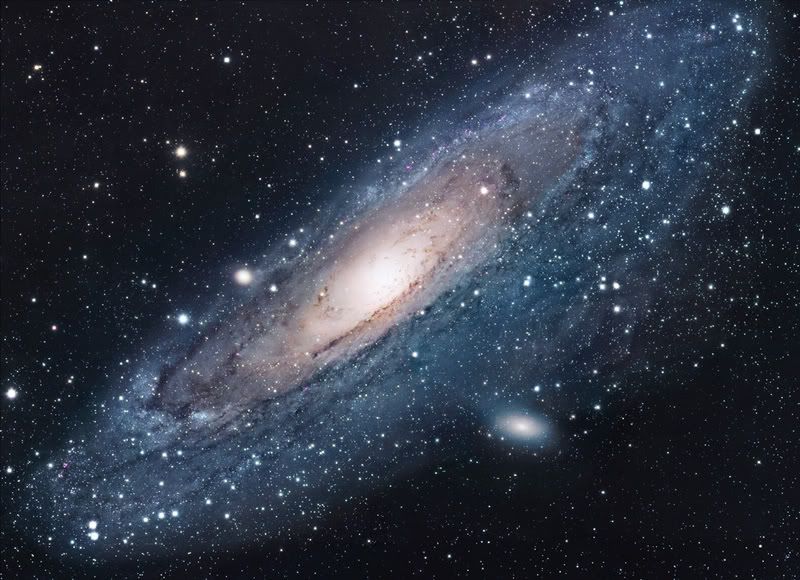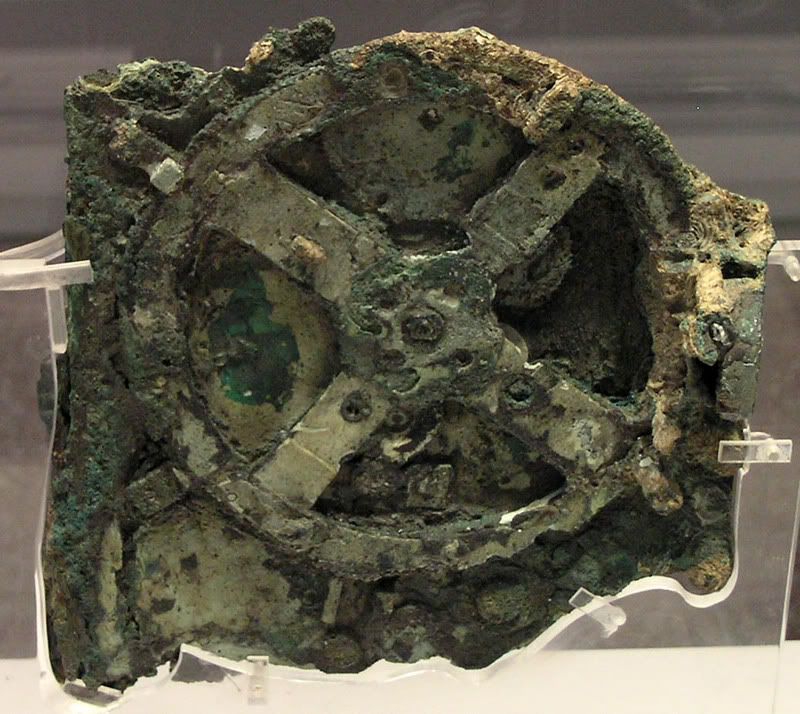Galaxies, Nebulas and the Antikythera Mechanism

Unusual Starburst Galaxy NGC 1313
Credit: Henri Boffin (ESO), FORS1, 8.2-meter VLT, ESO
Explanation: Why is this galaxy so discombobulated? Usually, galaxies this topsy-turvy result from a recent collision with a neighboring galaxy. Spiral galaxy NGC 1313, however, appears to be alone. Brightly lit with new and blue massive stars, star formation appears so rampant in NGC 1313 that it has been labeled a starburst galaxy. Strange features of NGC 1313 include that its spiral arms are lopsided and its rotational axis is not at the center of the nuclear bar. Pictured above, NGC 1313 spans about 50,000 light years and lies only about 15 million light years away toward the constellation of Reticulum. Continued numerical modeling of galaxies like NGC 1313 might shed some light on its unusual nature.

M31: The Andromeda Galaxy
Credit & Copyright: Robert Gendler (robgendlerastropixs.com)
Explanation: Andromeda is the nearest major galaxy to our own Milky Way Galaxy. Our Galaxy is thought to look much like Andromeda. Together these two galaxies dominate the Local Group of galaxies. The diffuse light from Andromeda is caused by the hundreds of billions of stars that compose it. The several distinct stars that surround Andromeda's image are actually stars in our Galaxy that are well in front of the background object. Andromeda is frequently referred to as M31 since it is the 31st object on Messier's list of diffuse sky objects. M31 is so distant it takes about two million years for light to reach us from there. Although visible without aid, the above image of M31 is a digital mosaic of 20 frames taken with a small telescope. Much about M31 remains unknown, including how the center acquired two nuclei.

M42: Wisps of the Orion Nebula
Credit & Copyright: Jon Christensen
Explanation: The Great Nebula in Orion, an immense, nearby starbirth region, is probably the most famous of all astronomical nebulas. Here, glowing gas surrounds hot young stars at the edge of an immense interstellar molecular cloud only 1500 light-years away. In the above deep image, faint wisps and sheets of dust and gas are particularly evident. The Great Nebula in Orion can be found with the unaided eye just below and to the left of the easily identifiable belt of three stars in the popular constellation Orion. In addition to housing a bright open cluster of stars known as the Trapezium, the Orion Nebula contains many stellar nurseries. These nurseries contain hydrogen gas, hot young stars, proplyds, and stellar jets spewing material at high speeds. Also known as M42, the Orion Nebula spans about 40 light years and is located in the same spiral arm of our Galaxy as the Sun.


NGC 2174: Emission Nebula in Orion
Credit & Copyright: Dan Kowall (Photonhunter.com)
Explanation: A lesser known sight in the nebula-rich constellation Orion, NGC 2174 can be found with binoculars near the head of the celestial hunter. About 6,400 light-years distant, the glowing cosmic cloud surrounds loose clusters of young stars. Covering an area larger than the full Moon on the sky, this stunning narrow band image adopts a typical color mapping of the atomic emission from NGC 2174. The false-color mapping shows otherwise red hydrogen emission in green hues and emphasizes sulfur emission in red and oxygen in blue. Placing your cursor on the image will reveal an alternative image of the nebula made through broad band filters. The broad band image combines filters in a closer analogy to human vision, dominated by the red glow of hydrogen.

The Outskirts of M77
Credit & Copyright: Ken Crawford (Rancho Del Sol Observatory)
Explanation: Face-on spiral galaxy M77 lies a mere 60 million light-years away toward the aquatic constellation Cetus. Also known as NGC 1068, its very bright core is well studied by astronomers exploring the mysteries of supermassive black holes in active galaxies. While M77 is also seen at x-ray, ultraviolet, infrared, and radio wavelengths, this visible light image highlights another remarkable aspect of the galaxy. In the picture, the data has been enhanced to show outer faint details, following spiral arms and structures that reach far beyond the galaxy's brighter central regions. Including the fainter outskirts, the galaxy's diameter is well over 100 thousand light-years at M77's estimated distance, making it larger than our own spiral Milky Way.

The Antikythera Mechanism
Credit & Copyright: Wikipedia
Explanation: What is it? It was found at the bottom of the sea aboard an ancient Greek ship. Its seeming complexity has prompted decades of study, although many of its functions remained unknown. Recent X-rays of the device have now confirmed the nature of the Antikythera mechanism, and discovered several surprising functions. The Antikythera mechanism has been discovered to be a mechanical computer of an accuracy thought impossible in 80 BC, when the ship that carried it sunk. Such sophisticated technology was not thought to be developed by humanity for another 1,000 years. Its wheels and gears create a portable orrery of the sky that predicted star and planet locations as well as lunar and solar eclipses. The Antikythera mechanism, shown above, is 33 centimeters high and similar in size to a large book.